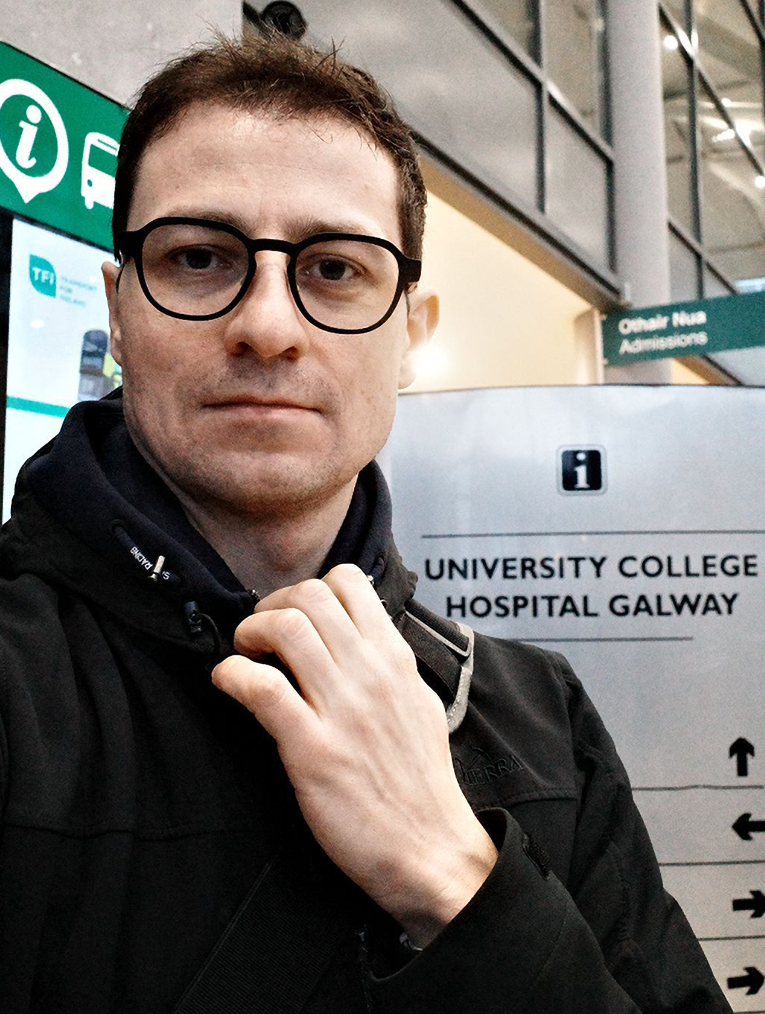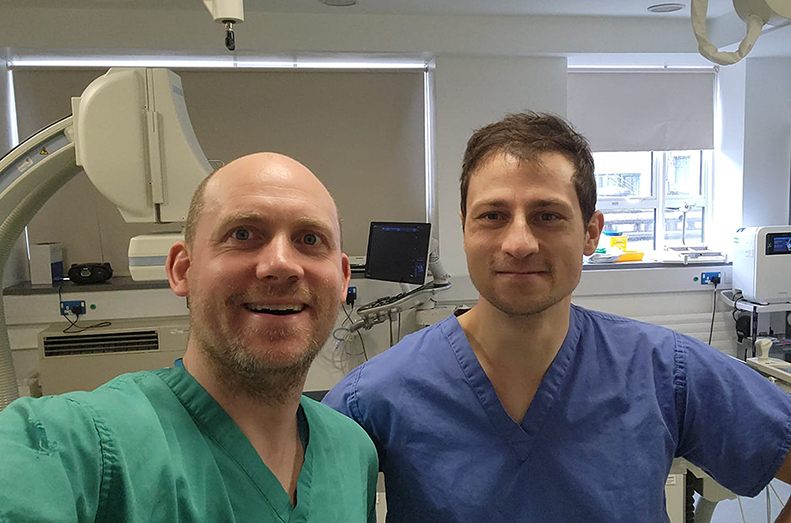I reached out to three centres, but it was the enthusiasm and genuine interest of Dr. Cormac O’Brien that made Galway stand out immediately. I felt confident I would be welcomed there. Galway was not an unknown place to me from before; Prof. Gerard O’Sullivan is a prominent figure within CIRSE, and I had admired his presentations at previous congresses about venous interventions. Through those talks and my phone conversation with Dr. O’Brien, I knew Galway would offer exposure to procedures we are eager to develop at our own institution.
The first thing that struck me was how different the setup and workflow were compared to our hospital in Sweden. Digital image storage was well established, but I was surprised by the continued reliance on paper documentation. Each patient arrived with a paper chart and signed consent forms were carefully reviewed and discussed. While we receive exam requests digitally, in Galway, referring clinicians would come in person to consult directly with the interventional radiologist. Initially, I imagined these frequent interactions might be distracting, but I soon realized they make the interventional radiologist more visible and accessible — something I came to appreciate.
After the paperwork was reviewed, the consultant would inform the patient about the procedure and possible complications. In my setting back home, this is usually handled by the referring clinician. I found this practice valuable; after all, it’s important that the patient knows their physician. While one procedure had been completed in one theatre, another was already being prepared in the other, which made it possible to complete a considerable number of cases each day.
One of the aspects I found most inspiring was the widespread use of conscious sedation. This is something I’ll certainly aim to incorporate into our practice. Midazolam and fentanyl were administered by the physician, and a dedicated nurse monitored vital parameters and documented them in the patient’s chart. This approach makes procedures far less painful and, in many cases, allows sedation to replace general anaesthesia, which is not always readily available. I also appreciated the post-procedural monitoring, for which there were two places, where patients were attended by nursing staff until they were ready to return to their ward.




